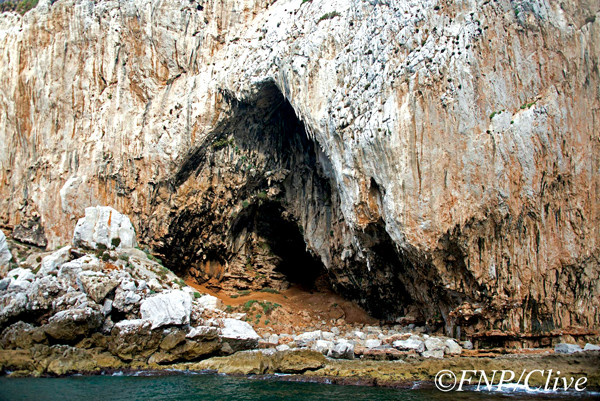
by Sara E. Pratt Tuesday, December 9, 2014

Gorham's Cave on the southeast side of the Rock of Gibraltar has been inhabited for tens of thousands of years. Credit: C. Finlayson, Gibraltar Museum.
The butchering, cooking and eating of birds has previously been thought to be an enterprise unique to modern humans, who were smart enough to catch them. However, a discovery in the dolomite caves of the Rock of Gibraltar shows that Neanderthals were the first to enjoy avian fare.
Excavations in Gorham’s Cave by Ruth Blasco and Clive Finlayson of the Gibraltar Museum and colleagues uncovered nearly 2,000 bones from rock doves, ancestors of modern feral pigeons, dating from 67,000 to 28,000 years ago. Some of the bones showed cut marks, were burnt and displayed teeth marks — indicating the birds were butchered, cooked and eaten.
“Our results point to hitherto unappreciated capacities of the Neanderthals to exploit birds as food resources on a regular basis,” the team wrote in Scientific Reports. “They were practicing it long before the arrival of modern humans and had therefore invented it independently.”
The sea caves, believed to be home to one of the last surviving populations of Neanderthals in Europe, were 5 kilometers inland when Neanderthals occupied them for tens of thousands of years. They were subsequently occupied by early modern humans; the youngest rock dove bones were found in human occupation sites.
Rock doves, which nest in caves, would have been easy prey, the researchers suggested, and their reproductive capacity would have ensured a large enough population to provide a steady supply of food.
© 2008-2021. All rights reserved. Any copying, redistribution or retransmission of any of the contents of this service without the expressed written permission of the American Geosciences Institute is expressly prohibited. Click here for all copyright requests.